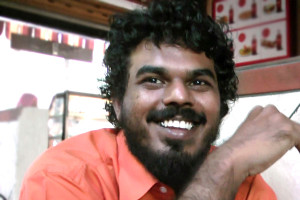August 30, 2014
When James Foley was beheaded by the Islamic State (IS) group after being held captive for two years, the American journalist became a big part of a story he was just there to cover.
The IS staged the execution, captured it on video and disseminated the footage on the internet to deliver their message. The video shocked anyone who saw it and raised editorial and ethical dilemmas in the newsrooms around the world over reporting the facts without becoming a propaganda tool of the IS. The footage was immediately banned on social media and in the UK even just watching it constitutes a crime.
Talking to us about the Foley video and the ethical lines when reporting propaganda are: Eric Margolis, the Toronto Sun; Kelly McBride, Poynter Institute; Mokthar Awad, Center for American Progress; and Elizabeth Anker, George Washington University.
In our Newsbytes this week: No prizes for guessing which channel Ukraine Today has been set up to compete against. The new 24-hour English-language international news channel began broadcasting on August 24, Ukrainian Independence Day as the conflict with Russia intensified; in Nigeria, a newspapers is stormed by soldiers after it reported government setbacks in their fight against Boko Haram; and trouble in paradise: a reporter from the Maldives goes missing after reporting on urban gangs.
Our feature this week is from Japan. After the Fukushima disaster in 2011, covering the nuclear issue there got tough. The media have been accused of regurgitating the government’s official lines – and putting the public at risk. Nuclear power has been a key component in the production of electricity in Japan. The plants have been shut for three years, but the government wants to restart them. Normally, that would be a subject up for debate in the public sphere, in the media. Trouble is that some think the Japanese journalism has lost its appetite for the story. The Listening Post’s Gouri Sharma investigates.
Finally, during the war in Gaza, a smartphone game that invited players to ‘Bomb Gaza’ was taken down by Google from its Play Store after a public backlash. Canadian filmmaker John Greyson decided to respond to the game, using the idea to put the Gaza bombing into context for Canadians. He produced a video that looks like the game and imposes the map of Gaza over the city of Toronto to show what a bombing campaign would look like in North America. Gazonto is our Web Video of the Week.

